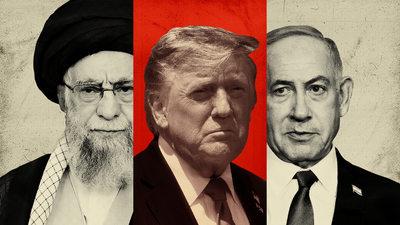
Following over ten days of intense regional hostilities, the crisis escalated precipitously after the United States conducted large-scale military strikes targeting Iran’s domestic nuclear facilities. Iran’s immediate retaliatory attacks on U.S. military bases across the Middle East further deteriorated the security environment, rapidly intensifying the conflict to a level that proved difficult to contain. Nonetheless, on June 24, facilitated by U.S. mediation and intensified third-party diplomatic efforts, the United States, Iran, and Israel declared an intention to cease hostilities under substantial wartime pressure.
It is critical to note that this ceasefire declaration is not a legally binding accord endorsed through formal diplomatic channels, nor is it accompanied by an established framework for dialogue or conflict resolution. Instead, it reflects a provisional “weariness” among the parties after nearly two weeks of reciprocal attacks and significant human and material losses, enabling a potential, albeit fragile, short-term de-escalation.
Shortly after the ceasefire announcement, the Israeli Defense Minister accused Iran of violating the agreement by launching ballistic missiles, prompting orders for intensified Israeli strikes targeting Tehran’s center. Iran’s state media denied these allegations, underscoring the fragility and contested nature of the ceasefire’s implementation from the outset.
Ceasefire as Tactical Respite Amidst Enduring Hostilities
The ceasefire, as articulated by former President Trump, was structured to take effect in staged intervals over a 24-hour period, signaling an operational pause rather than a comprehensive cessation of hostilities. Absent from this arrangement were formal signatories, established communication channels, and verification mechanisms. The agreement’s core commitment—to halt mutual attacks temporarily—lacked detailed clauses or enforcement provisions customary in traditional ceasefires. Consequently, both parties retained strategic latitude to resume military operations citing security imperatives, framing the ceasefire more as a political gesture than a durable peace instrument.
Several vulnerabilities underscore the ceasefire’s tenuous nature: first, the absence of clearly defined operational boundaries and exclusion zones creates persistent ambiguity about permissible military actions. Second, the lack of liaison or communication frameworks increases risks of miscalculation amid informational voids. Third, the absence of credible third-party monitoring—whether by international bodies such as the United Nations or impartial observers—deprives the ceasefire of mechanisms to investigate or adjudicate violations. Collectively, these deficiencies limit the ceasefire to a transient “breathing space,” precariously balanced amid domestic and international pressures.
Underlying this fragile ceasefire is a pervasive mutual distrust that has shaped conflict dynamics and obstructed lasting resolution. Israel remains acutely aware of Iran’s rapid retaliatory capacity and strategic resolve, while Iran perceives Israeli intelligence and missile defense capabilities as persistent threats during the ceasefire period. Both parties harbor concerns that the pause may be exploited for military repositioning or surprise offensives, sustaining high alertness levels through ongoing defensive exercises and operational preparations even as the ceasefire was declared. This persistent state of vigilance signals the conditional and instrumental nature of the ceasefire.
Strategic Outcomes and Limitations for Israel, Iran, and the United States
The ceasefire reflects nuanced strategic calculations and mixed outcomes across the three principal actors.
Israel achieved significant tactical gains through precise air strikes severely damaging key nuclear facilities, scientific personnel, and strategic infrastructure. This operation, however, fell short of completely dismantling Iran’s nuclear program or underground capabilities. Israel’s decision to endorse the ceasefire appears motivated by a desire to preserve military resources, mitigate international diplomatic pressure, and manage domestic political divisions.
Despite substantial damage to nuclear and military infrastructure, Iran maintained regime stability and demonstrated resilient deterrence through retaliatory missile strikes, notably against U.S. bases in Qatar and Iraq. This calibrated response bolstered national cohesion and underscored Iran’s capacity to sustain strategic operations despite intense pressure. However, Iran faces significant long-term challenges in reconstruction, scientific personnel losses, and socio-economic stress exacerbated by sanctions and isolation.
United States marked its most direct military engagement with Iran since 1979, signaling a renewed willingness to intervene decisively in Middle Eastern security affairs. The U.S. effectively leveraged its regional military posture and diplomatic influence to facilitate a ceasefire, reinforcing its strategic partnerships. Yet, the U.S. encountered operational shortcomings in missile defense, failed to secure an internationally recognized ceasefire framework, and did not achieve its overarching objective of halting Iran’s nuclear ambitions, fueling regional anti-American sentiment.
While all three parties claim tactical successes, the conflict and ceasefire reveal substantial strategic vulnerabilities. Israel’s missile defense gaps and incomplete neutralization of Iran’s nuclear network expose ongoing security risks. Iran’s infrastructural and human capital losses pose long-term impediments, while enduring economic and social challenges threaten internal stability. The United States’ inability to convert military engagement into a legally grounded, sustainable peace framework highlights the limits of its regional influence.
Moreover, the absence of a formalized conflict resolution mechanism, combined with entrenched distrust and adversarial postures, suggests that this ceasefire is a provisional pause rather than a durable settlement. Without structural guarantees, third-party monitoring, and robust communication channels, the risk of renewed hostilities remains high, underscoring the fragility of this tenuous peace.
Source: Muslimi, BBC, Arab News, Xinhua



